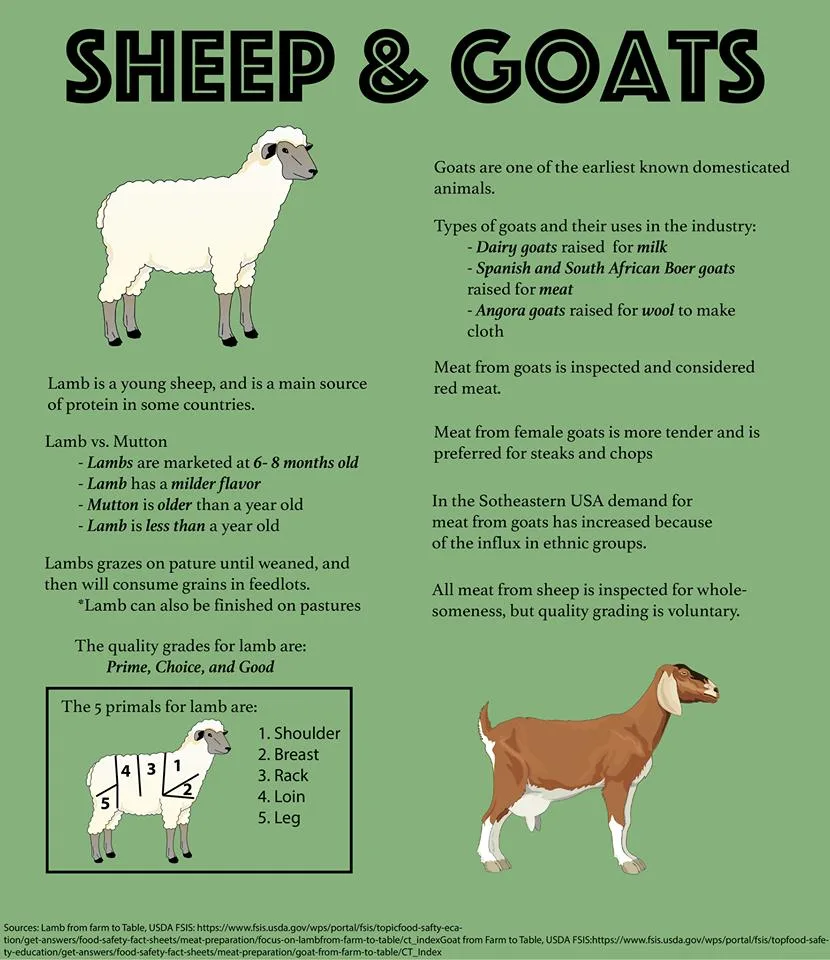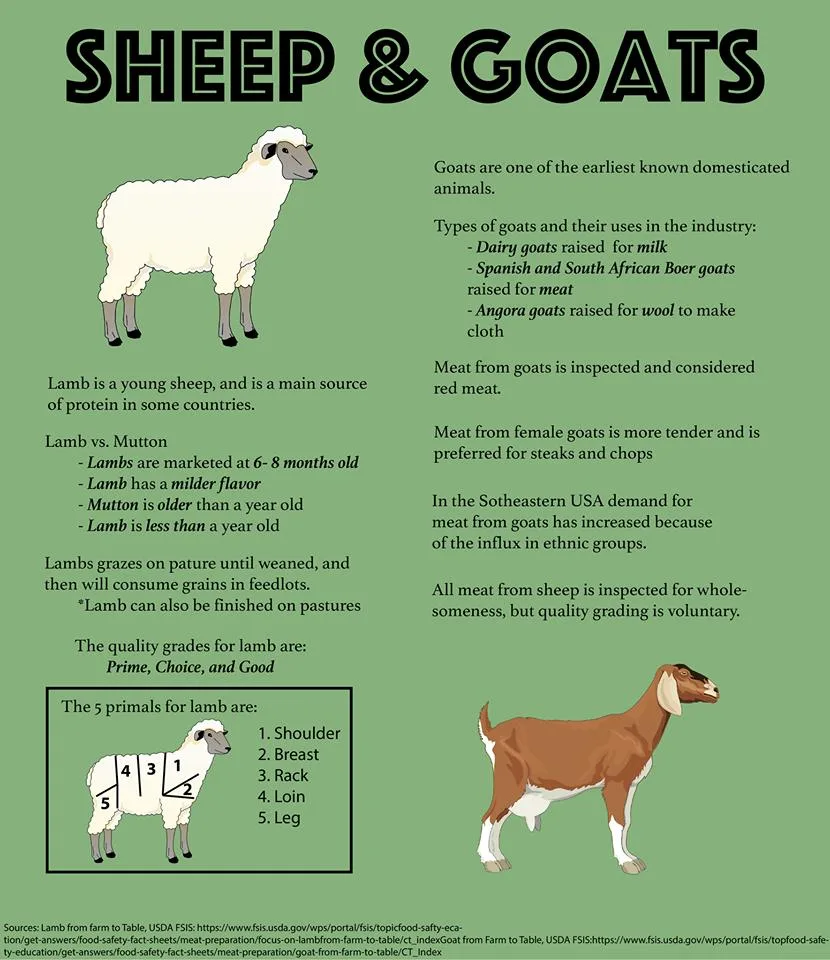Mutton vs Lamb: Understanding the Differences in Taste, Nutrition
– Lamb is meat from young sheep under one year of age, while mutton is meat from mature sheep harvested between 2 to 3 years of age
– There are two sub-categories of lamb: baby lamb (6 to 10 weeks old) and spring lamb (5 to 6 months old)
– There is one sub-category of mutton called yearling mutton (12 to 24 months)
– In the United States, most retailers sell lamb meat that is 24 months or older, but it is often mislabeled and marketed as lamb
– Mutton is considered inferior in quality, taste, and texture compared to lamb
– Mutton has a more robust and gamey taste, while lamb has a delicate, mild, and slightly sweet flavor
– Mutton can be fatty, and its bolder flavors are softened when slow-cooked or braised
– Lamb pairs well with various sauces and marinades
– Lamb is preferred over mutton for its taste, texture, and mouthfeel
– Raw lamb meat has a lighter, pink color, while mutton meat has a deep, dark red hue
– Raw lamb meat has a sweet and fresh smell, while mutton meat has a pungent smell with an aged gamey scent
– Lamb is generally more expensive than mutton
– Expect to pay around $18 to $40 per lb. for good quality organic grass-fed lamb, and around $9 to $12 per lb. for mutton
– In the US, there may be mislabeling and selling of mutton (and goat meat) as lamb
– Visual differences between lamb and mutton can help distinguish them, such as size, color, and rib size
– Lamb meat is tender and soft, while mutton meat is tougher and contains more fat
– Lamb can be prepared in various ways depending on the cut, while mutton requires slow cooking due to its toughness
– Lamb is popular in Australia, Europe, New Zealand, and Canada, while mutton is commonly found in Middle Eastern, Indian Subcontinent, Mongolia, and South American cuisines
– Lamb and mutton are different types of meat, while goat meat is a separate species
– Lamb is more tender and has a more refined taste, while mutton is tougher and more gamey
– Lamb is about 60 to 70% more expensive than mutton
– Lamb can be fried or grilled, while mutton requires slow cooking or stewing
– Mutton contains a higher fat content compared to lamb
– In India, the term “mutton” is commonly used for both sheep and goat meat, but it mostly refers to goat meat
– Popular cooking methods for lamb include grilling, braising, and roasting
– The most popular method to prepare mutton is slow cooking or stewing
– Mutton is more popular due to its strong flavor, while lamb is considered a healthier choice

